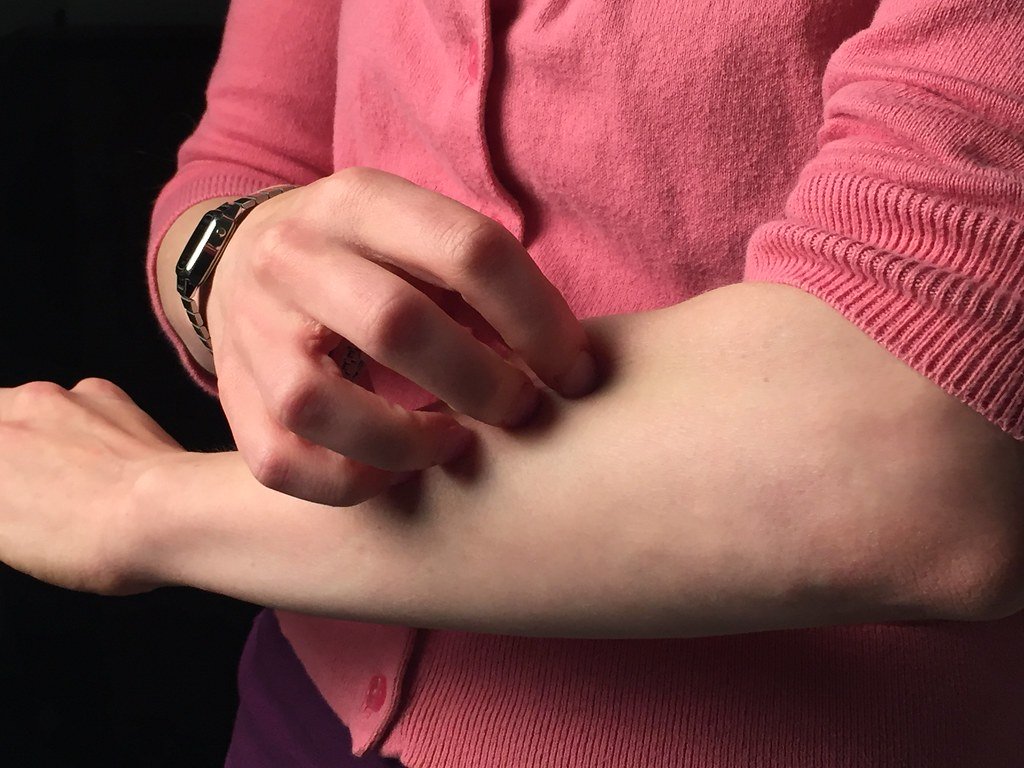How to Keep Chiggers Out of Your Yard and Skin
I have first hand experience with chiggers as an entomologist who conducted fieldwork in Florida and Georgia, the hub of these mites! I spent many days in the summer trying not to scratch the big welts left by chigger bites after I spent the day wandering through the woods. We were recently featured in Toms Guide talking about how to deal with chiggers in your yard.
But i will be the first to tell you that the chigger is gone within an hour or day, and that nail polish is not suffocating them. If you want to know more, read on.
What are Chiggers?
First thing is to understand what a chigger does and why it bites us. Chiggers are mites, bird mites to be specific. They only want to suck the blood from birds, but when we wander into bird habitat, they crawl onto us in hopes of a good meal. many people think that chiggers burrow into us, but that's just plain wrong. Chiggers taste us when they bite us and immediately fall off when they realize we have human blood instead of bird blood. So the welts left behind are our body's way of getting rid of the allergic reaction to the mite's saliva. This is that same thing that happens when we get a big welt from a mosquito or horsefly.
A precise understanding of their biological classification and life cycle is fundamental to effective prevention and management. These microscopic entities are not insects; rather, they are the parasitic larval stage of certain mites belonging to the family Trombiculidae, classifying them as arachnids, more closely related to spiders and ticks than to mosquitoes or fleas. This distinction is crucial, as it informs the appropriate strategies for control and treatment.
Only the six-legged larval stage of the chigger is parasitic and actively seeks hosts for feeding. The subsequent nymph and adult stages, which possess eight legs, are free-living predators that consume insect eggs, small insects, or other organic matter found in the soil and do not bite humans.Chigger larvae are exceedingly small, typically measuring between 0.15 and 0.3 mm (1/100 to 1/120 inch) in diameter, rendering them nearly invisible to the unaided eye.
How do I Treat Myself if a Chigger Bites Me?
Humans are considered accidental hosts for chiggers. While these mites primarily favor small mammals, birds, reptiles, and amphibians, they will readily attach to people when the opportunity arises. The primary concern for humans stems from the intense itching and significant discomfort induced by chigger bites. This irritation, if not managed, can lead to vigorous scratching, which in turn may result in secondary bacterial infections.
Research indicates that chiggers are "usually dislodged or die within hours" on human skin , rarely surviving long enough to complete a full meal due to the human immune response.
Larval chiggers typically climb onto vegetation from the soil surface, waiting in large, clumped groups for a suitable host to pass by. They tend to remain close to their hatching spot, usually less than a foot off the ground.
Once on a host, chiggers do not immediately bite. Instead, they migrate to parts of the body where clothing fits tightly or where the skin is thin, tender, or wrinkled. Common bite locations include ankles, waistline, knees, armpits, belt lines, and areas under socks. Anyone spending time outdoors in chigger-prone environments is at risk, including hikers, hunters, campers, gardeners, and those simply enjoying their backyards.
Contrary to widespread belief, chiggers do not suck blood. Instead, they pierce the skin with their sharp, piercing mouthparts and inject a digestive enzyme or fluid into the superficial layers of the skin. This fluid dissolves the surrounding tissue and skin cells, creating a liquefied pool of nutrients. The chigger then sucks up these liquefied tissues. During this feeding process, the injected fluid also causes the formation of a straw-like feeding tube, or stylostome, from which the chigger feeds.
Chigger bites typically manifest as small, raised skin bumps. They are often described as intensely itchy red bumps , which can resemble pimple-like lesions, blisters (vesicles), or small hives. Some individuals may develop welts or reddish areas, occasionally accompanied by clear pustules. In rare, severe cases, larger blisters, known as bullae, may form. A distinctive feature of chigger bites is their tendency to appear in groups and to cluster in specific body areas.
The itching typically commences 4 to 8 hours after the chiggers attach , usually peaking at 24 to 48 hours. While the intense itch may subside after a few days, the redness and bumps can persist for one to two weeks as the body's allergic reaction resolves
Where Do Chiggers Live?
Within the United States, chiggers are particularly prevalent in warm, humid regions, including the Southeast, South, and Midwest. This concentration in specific climate zones guides regional public health advisories and targeted prevention campaigns. Their activity in most temperate areas is seasonal, typically spanning from late spring through early autumn. However, in warmer, southern areas, chiggers can remain active year-round , extending the period of potential human exposure.
Chiggers are most active within a preferred temperature range of 77–86°F. Their activity significantly diminishes when temperatures fall below 60°F or rise above 99°F, and they cannot survive when temperatures drop below 42°F.
Chiggers thrive in environments characterized by a combination of heat and humidity. These specific environmental conditions are critical for their survival and successful development. They are most frequently encountered in low, damp areas with heavy vegetation , particularly within vegetation-shaded soil. Common habitats include:
Tall Grasses and Overgrown Foliage: These areas are ideal as they trap moisture and create higher humidity levels closer to the soil surface, providing a favorable microclimate for chiggers.
Proximity to Water Bodies: Areas near natural bodies of water, such as streams and rivers, naturally exhibit higher humidity, making them preferred chigger habitats.
Forests and Shaded Areas: Forests, the edges of woodlands, natural shaded areas, leaf litter, rotten logs, and stumps provide both shade and moisture, creating suitable environments for chiggers.
Managed Landscapes: Even seemingly well-maintained areas like home lawns, golf courses, gardens, and flowerbeds can harbor chiggers, especially if they contain unmanaged pockets or dense plantings.
How Do I Keep Chiggers from My Yard?
Targeted treatment of known "hot spots" within a yard (e.g., specific overgrown corners or shady borders) is far more efficient and environmentally sound than broad, indiscriminate application of repellents or pesticides across an entire property.
The best strategy to keep chiggers out of your yard and off you is a holistic look at managing your landscaping. This includes:
Regularly mow the lawn, keeping the grass short. Chiggers prefer tall grasses and weeds, so reducing their height eliminates a significant portion of their preferred habitat.
Consistently clear away leaf litter, grass cuttings, brush piles, and other organic debris. These materials provide protected places for chigger eggs and adults to overwinter and for larvae to hide.
Trim back dense shrubs and bushes, and prune tree branches to open up areas to sunlight. This practice directly impacts the microclimate by raising soil temperatures and lowering humidity, creating habitats that are less suitable for chiggers and their animal hosts.
Ensure lawns and garden areas have proper drainage and avoid excessive watering. Overwatering can create ideal moist conditions for chiggers.
If using mulch, apply it in a thin layer and choose drier materials like wood chips. Excessive or damp mulch can retain too much moisture, creating favorable chigger habitats.
Encourage the presence of beneficial insects like ants and ground beetles, which are known to prey on chigger larvae.
If you do get bit, make sure you take the most effective action. The pervasive and incorrect belief that chiggers burrow into the skin directly leads to dangerous and ineffective self-treatment attempts. People mistakenly believing they need to "suffocate" the embedded mite, resort to applying harmful substances like nail polish, petroleum jelly, bleach, or even attempting to burn the bite. The best treatment is a warm shower taken within an hour or two after exposure which greatly reduces the number of irritating bites.





